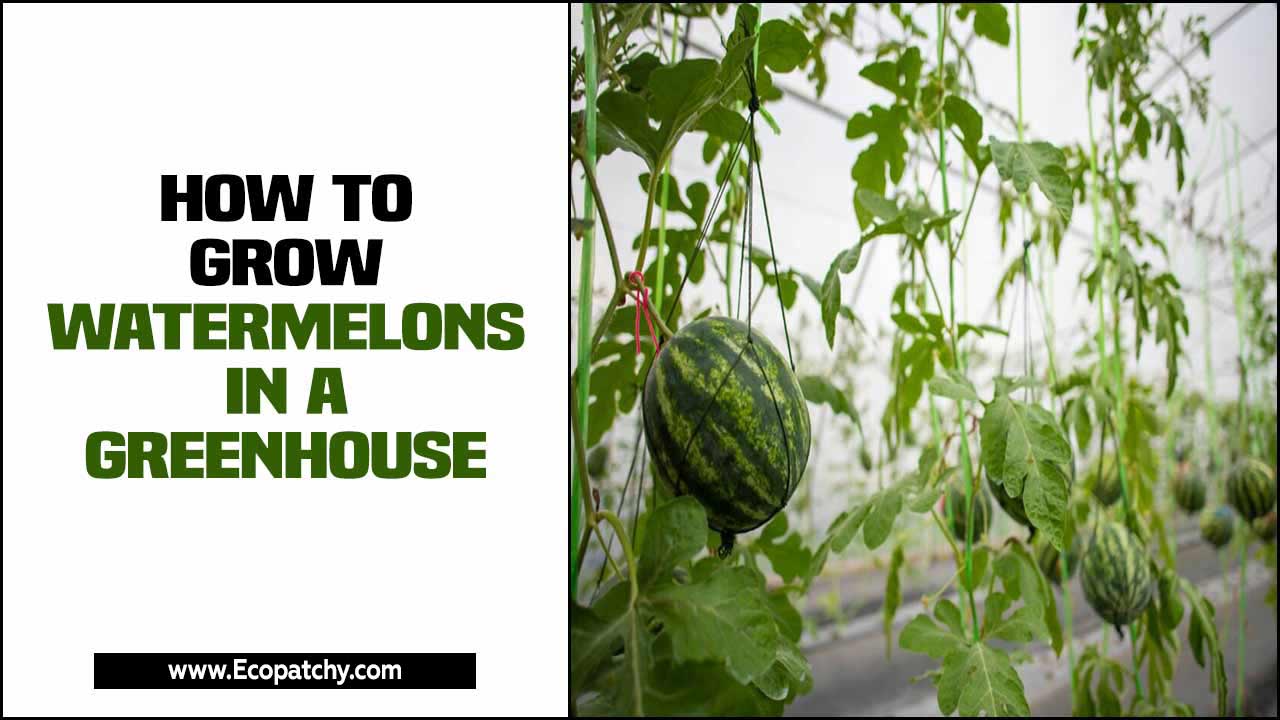Cilantro, also known as coriander, is a popular herb with a distinct flavor and aroma that adds a unique touch to many dishes. Growing cilantro at home from seeds is an easy and cost-effective way to have fresh herbs on hand whenever you need them.
Not only is it a practical option, but it also allows you to have control over the growing process. It ensures that your cilantro is free from any harmful chemicals or pesticides.
However, for many beginner gardeners, the thought of starting a plant from seeds can be daunting. It requires patience, proper care, and the right techniques to successfully grow a thriving cilantro plant.
We will guide you through the steps of growing cilantro from seeds, providing you with all the necessary information and tips to help you along the way. Whether you have a large garden or a small windowsill, it will assist you in cultivating your very own cilantro plant that will provide you with a continuous supply of fresh, flavorful leaves.
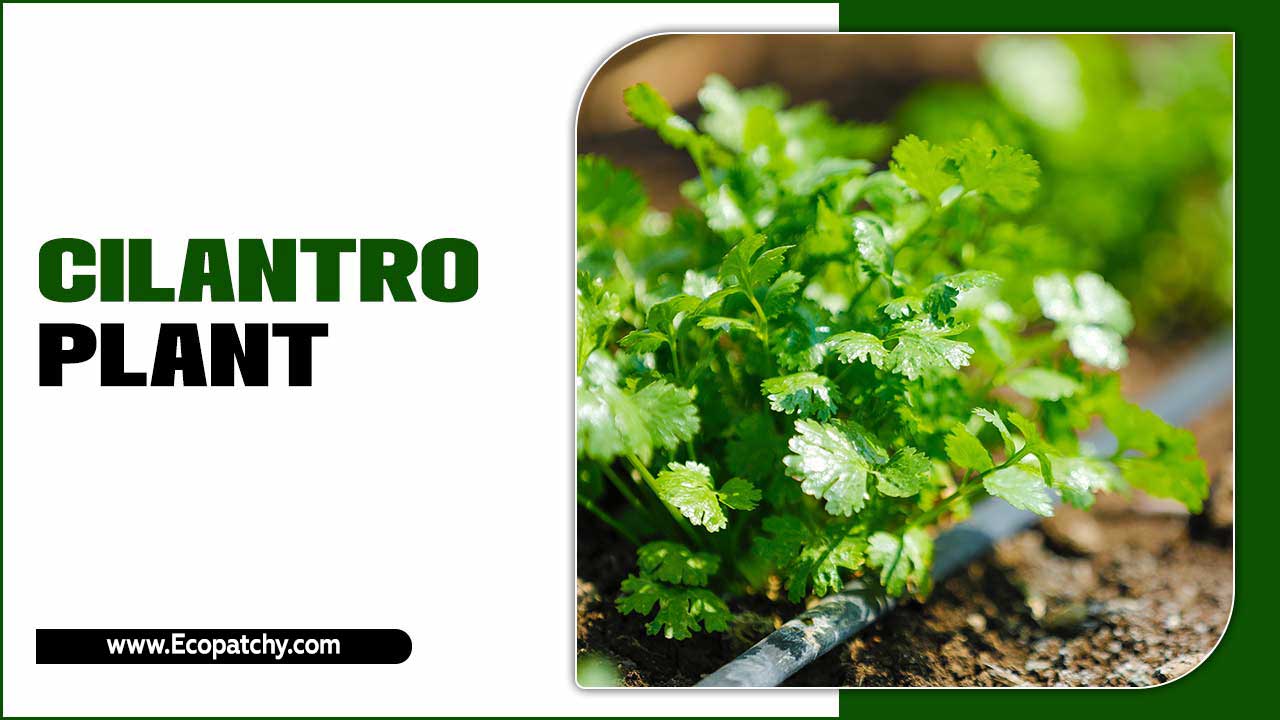
What Is Cilantro?
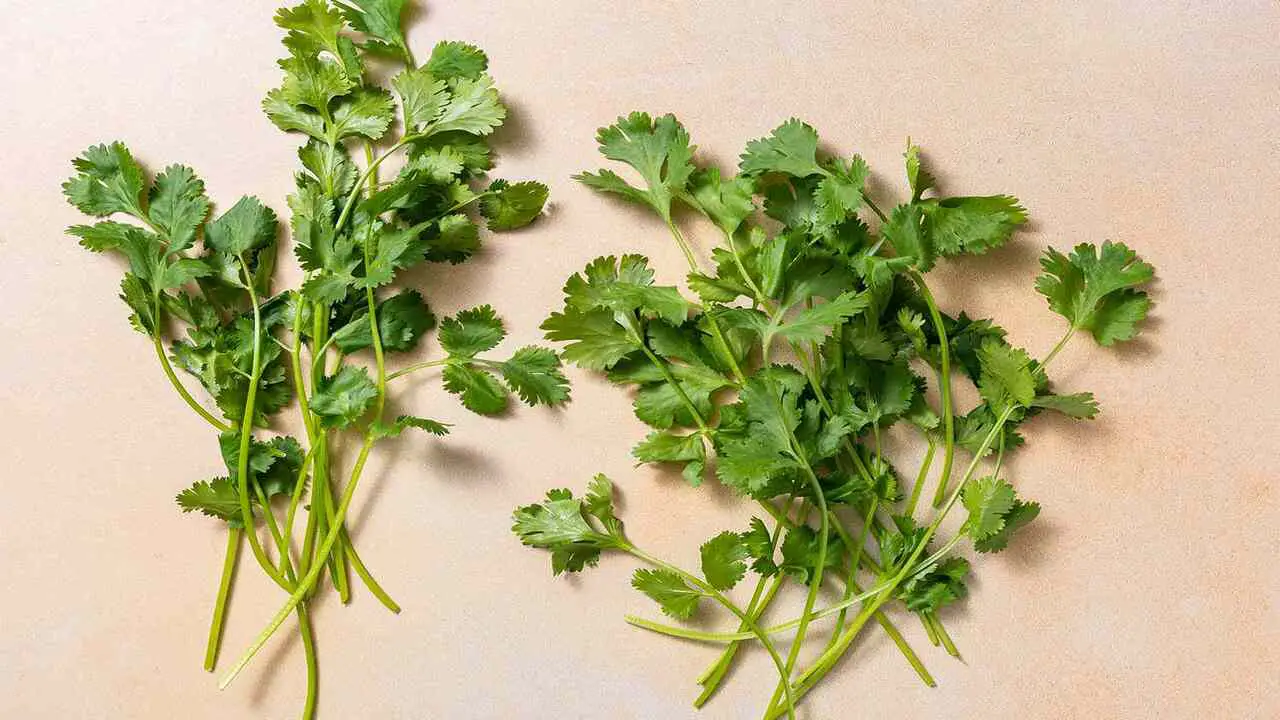
Cilantro, also known as coriander in some regions, is a popular herb that is widely used in various cuisines around the world. It is a member of the parsley family and has bright green leaves with a distinct, refreshing aroma. Cilantro has a unique flavor that is often described as citrusy and slightly peppery, adding a fresh and vibrant taste to dishes.
It is commonly used in Mexican, Indian, Middle Eastern, and Southeast Asian cuisines, where it is added to salsas, curries, salads, and marinades. Aside from its culinary uses, cilantro also offers several health benefits.
It is rich in antioxidants, vitamins A and K, and minerals like potassium and calcium. So whether you’re adding it to your favorite dish or using it as a garnish, cilantro can elevate the flavors of your meals while providing additional nutritional value.
What You Need To Grow Cilantro From Seeds
By having these essentials ready, you’ll be well on your way to growing fresh cilantro from seeds. To successfully grow cilantro from seeds, you will need the following:
- Cilantro Seeds: Purchase high-quality cilantro seeds from a reputable source. Make sure they are fresh and viable.
- Soil: Choose well-draining soil that is rich in organic matter. Cilantro prefers slightly acidic soil with a pH between 6.2 and 6.8.
- Containers: Use containers or pots with drainage holes to plant your cilantro seeds. Alternatively, you can sow them directly in the ground if you have a garden.
- Sunlight: Cilantro thrives in full sun but can tolerate some shade. Place your containers or prepare your garden bed in a spot that receives at least 6 hours of sunlight per day.
- Water: Cilantro requires consistent moisture, so water your plants regularly to keep the soil evenly moist but not waterlogged.
- Fertilizer: Use a balanced fertilizer to provide essential nutrients to your cilantro plants. Follow the instructions on the fertilizer packaging for application rates and frequency.
- Mulch: Apply a layer of organic mulch around your cilantro plants to help retain moisture and suppress weed growth.
- Harvesting Tools: Keep scissors or garden shears handy for harvesting cilantro leaves as needed.
How To Grow Cilantro Plant From Seeds? – 6 Easy Ways
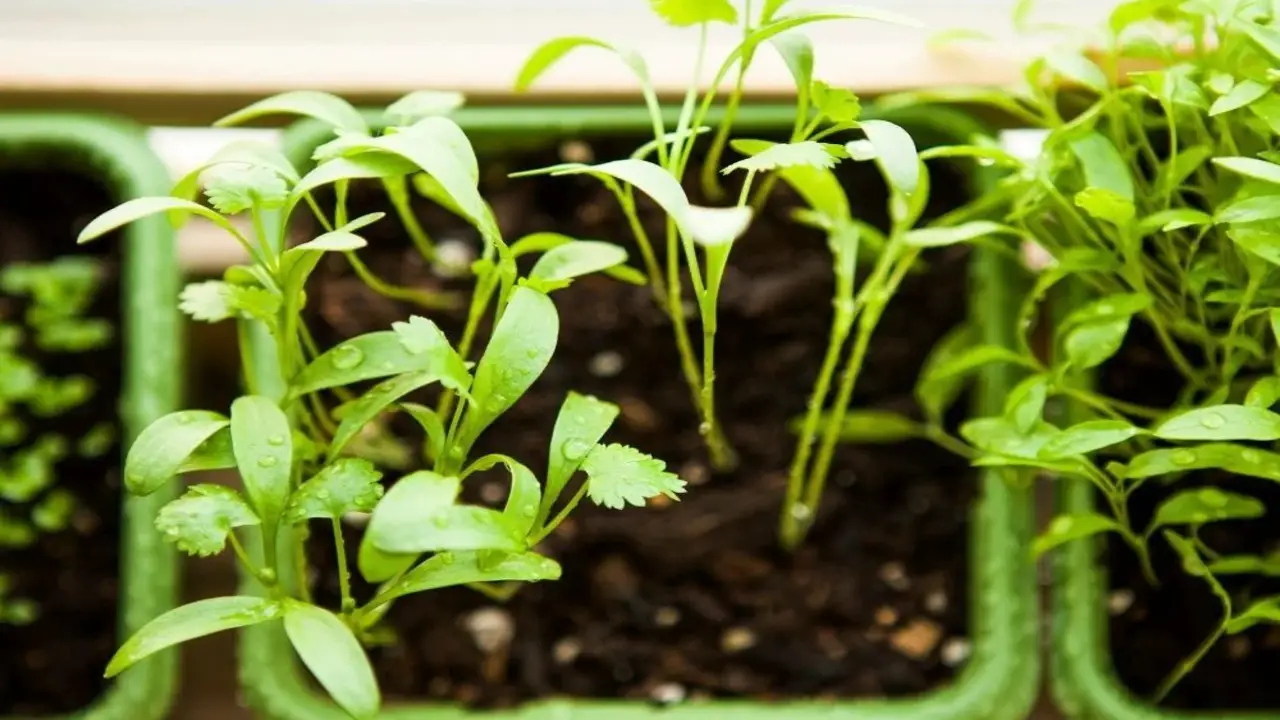
Growing cilantro from seeds is a relatively easy process that can be done in several ways. Remember to keep the soil consistently moist and provide your cilantro plants with plenty of sunlight to ensure healthy growth. With these easy methods, you’ll soon be enjoying fresh, homegrown cilantro in your favourite dishes. Here are six simple methods to help you successfully grow cilantro plants from seeds:
1.Selecting The Right Variety
When it comes to selecting the right variety of cilantro for your garden, there are a few factors to consider. First and foremost, you’ll want to choose a variety that is well-suited for your growing conditions. Some varieties of cilantro are more heat-tolerant, while others thrive in cooler weather.
Additionally, think about your culinary needs. Are you looking for a cilantro variety with a strong flavor for your salsas and curries? Or do you prefer a milder variety for use in salads and garnishes?
Gardeners should also take into account the life cycle of cilantro. Some varieties bolt quickly, meaning they produce seed heads and go to flower faster than others. If you want a longer harvest period, look for a slow-bolting variety. It’s also worth considering the size of your garden and the amount of space you have available. There are compact varieties of cilantro that are perfect for small herb gardens or containers.
2.Preparing The Soil
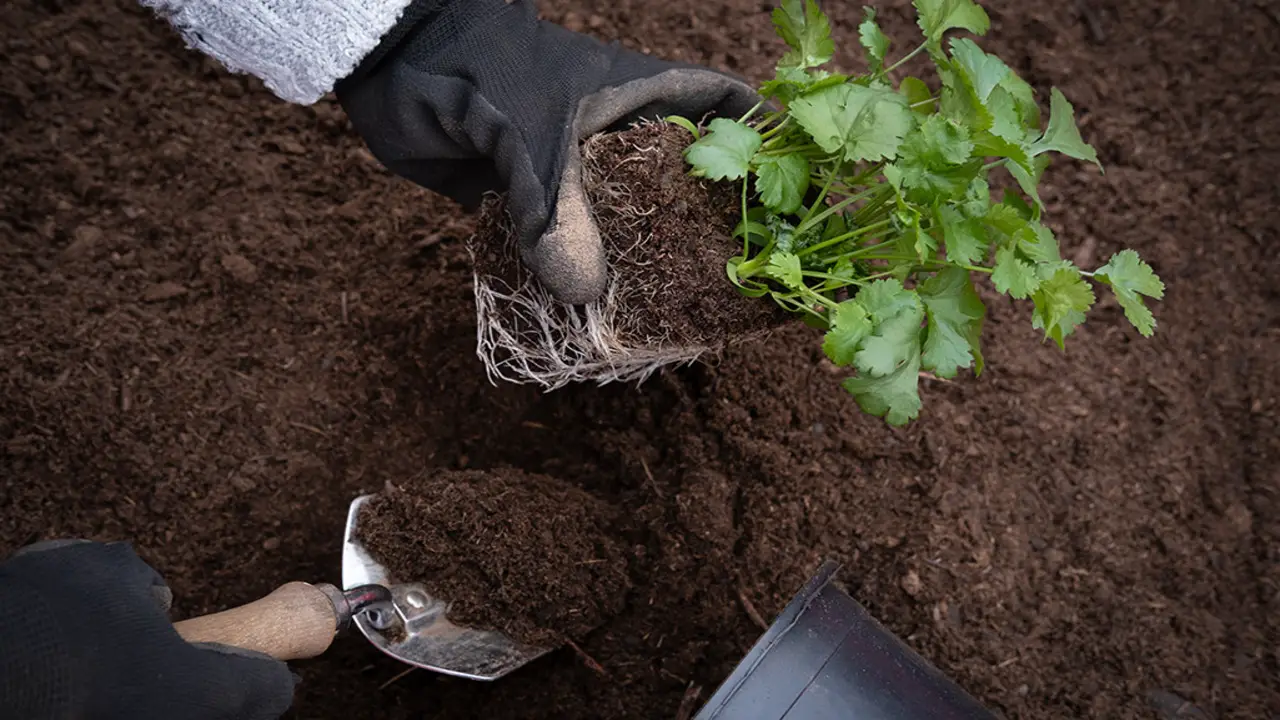
When it comes to growing cilantro plants from seeds, proper soil preparation is essential for their success. Creating a suitable soil environment for cilantro seeds involves a few key steps. Start by preparing the soil before planting, ensuring it is well-draining and rich in organic matter.
Incorporating compost or aged manure can provide the necessary nutrients for healthy growth. It’s also important to check the soil pH, as cilantro prefers a slightly acidic to neutral pH range of 6.2 to 6.8.
Mulching the soil can help conserve moisture and maintain a cooler temperature, which cilantro plants thrive in. By following these soil preparation techniques, gardeners can create an optimal environment for cilantro seedlings to flourish and produce flavorful leaves for their culinary endeavors.
3.Planting Cilantro Seeds

To ensure optimal growth of cilantro plants, it is important to follow proper techniques for sowing cilantro seeds. Whether you’re planting cilantro seeds in your garden or in containers, there are key considerations to keep in mind. Begin by sowing the seeds at the right depth, usually about ¼ inch deep.
This will allow the seeds to germinate and establish healthy plants. When planting cilantro seeds in the ground, make sure to space them about 6 inches apart to give each plant enough room to grow. In containers, use well-draining soil with organic matter to provide the necessary nutrients.
Additionally, cilantro seeds benefit from cooler weather, so early spring or late summer is ideal for planting. By following these steps, you can successfully sow cilantro seeds and enjoy a bountiful harvest of fresh leaves, perfect for adding a burst of flavor to salsa, curries, and other cuisines.
4.Watering And Fertilizing
When it comes to nurturing cilantro plants, proper watering and fertilization techniques play a crucial role in their growth and development. To promote healthy growth, it is important to water cilantro seedlings regularly, ensuring that the soil is evenly moist without becoming waterlogged.
Maintaining proper moisture levels is essential for thriving cilantro plants, as they prefer slightly moist soil. Additionally, fertilizing cilantro plants with organic matter or a balanced fertilizer can provide them with the necessary nutrients for optimal nutrition.
Gardeners should aim to feed their cilantro plants every few weeks during the growing season, using a fertilizer high in nitrogen. By implementing effective watering and feeding strategies, gardeners can ensure that their cilantro plants thrive and produce an abundance of fresh leaves, perfect for adding flavor to various cuisines.
5.Thinning The Plants
Thinning cilantro plants is crucial for their optimal growth and development. By removing excess seedlings, you create enough space for each plant to flourish. To properly thin out crowded cilantro seedlings, gently grasp the base of the unwanted plant and carefully pull it out, ensuring minimal disturbance to the surrounding soil and roots.
Aim for a spacing of 6 to 8 inches between the remaining plants to allow for proper air circulation and prevent overcrowding. Removing excess cilantro plants also improves the overall yield by giving the remaining plants more access to nutrients, water, and sunlight. Remember to thin out the plants when they are still young to avoid damaging the delicate roots. Happy thinning!
6.Harvesting And Storing
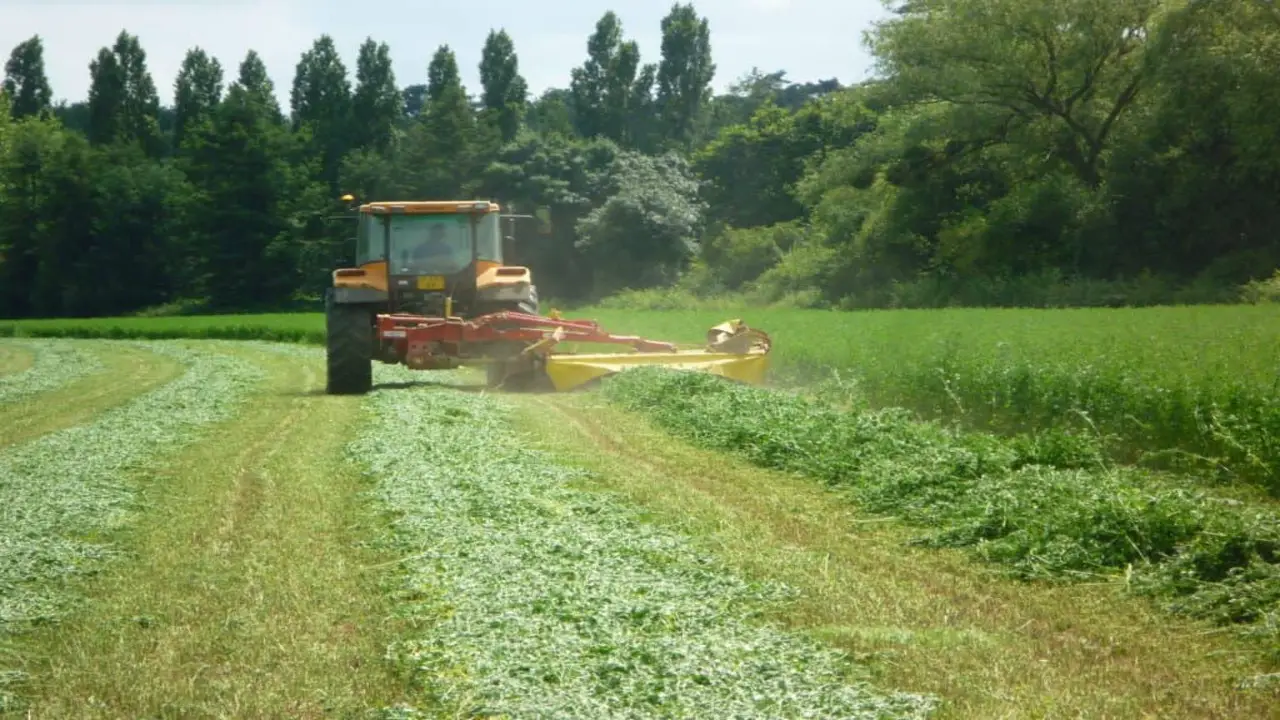
When it comes to harvesting cilantro leaves, timing is crucial. Harvesting the leaves at the right time ensures maximum flavor and freshness. To harvest cilantro plants, simply cut the outer leaves, starting from the bottom of the plant. This allows the inner leaves to continue growing.
If you’re planning to store cilantro leaves for a longer period, it’s best to dry them. Hang the bunches upside down in a well-ventilated area until they are completely dry. Once dried, remove the leaves from the stems and store them in an airtight container.
For cilantro seeds, wait until the seed heads turn brown before harvesting. Cut the stalks and place them in a paper bag. Allow the seeds to dry further in the bag for a couple of weeks before removing them. Store the dried seeds in a cool, dark place to maintain their viability for future use.
What Are The Benefits Of Growing Cilantro?
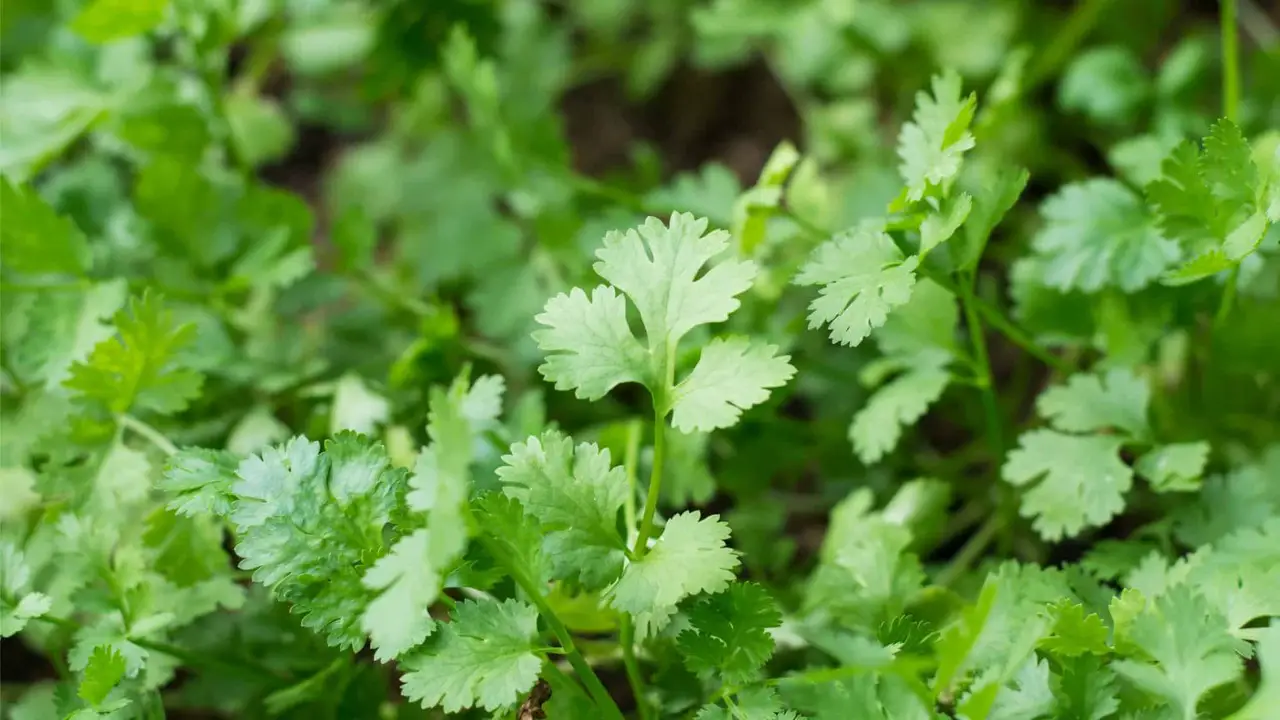
Growing cilantro can bring a variety of benefits to your garden and kitchen. Here are some key advantages of growing cilantro:
- Fresh Flavor: Cilantro adds a unique, fresh flavor to dishes with its citrusy and slightly spicy taste. Having it readily available in your garden allows you to incorporate this flavorful herb into your cooking whenever you want.
- Versatility: Cilantro is a versatile herb that can be used in a wide range of cuisines, including Mexican, Indian, Thai, and Mediterranean. It can be added to soups, salads, salsas, dips, marinades, and more.
- Nutritional Value: Cilantro is packed with essential nutrients like vitamins A, C, and K. It also contains minerals such as potassium and calcium. Adding cilantro to your meals not only enhances the taste but also contributes to a well-rounded diet.
- Medicinal Properties: Cilantro has been used for centuries in traditional medicine for its potential health benefits. It is believed to have antibacterial properties, aid digestion, and help detoxify the body.
- Easy To Grow: Cilantro is relatively easy to grow in various climates and can be grown both indoors and outdoors. It can tolerate cooler temperatures and doesn’t require extensive care or maintenance.
By growing cilantro at home, you can enjoy the convenience of having this flavorful herb readily available while reaping the nutritional benefits it offers.
Tips For Planting Cilantro Seeds
Planting cilantro seeds can be a rewarding experience for any herb enthusiast. Here are some tips to help you successfully grow cilantro from seeds:
- Choose The Right Time: Cilantro prefers cooler temperatures, so it’s best to plant the seeds in early spring or late fall when the weather is mild.
- Prepare The Soil: Cilantro thrives in well-draining soil that is rich in organic matter. Before planting, work compost or well-rotted manure into the soil to improve its fertility.
- Sow The Seeds: Scatter the cilantro seeds evenly over the prepared soil and lightly press them into the surface. It’s important not to bury the seeds too deep, as they require light to germinate.
- Keep The Soil Moist: Cilantro seeds need consistent moisture to germinate and grow. Water the planted area regularly, making sure not to let the soil dry out completely between watering sessions.
- Thin Out Seedlings: Once the seedlings have emerged, thin them out to ensure proper spacing. This will prevent overcrowding and promote healthy growth.
- Harvest Regularly: As cilantro matures quickly, it’s important to harvest regularly by snipping off individual leaves or stems from the outer parts of the plant. This will encourage continuous growth and prevent bolting.
By following these tips, you’ll be on your way to enjoying fresh and flavorful cilantro straight from your garden!
Conclusion
Growing cilantro from seeds is a rewarding experience for any gardener or cooking enthusiast. With the right knowledge and care, you can enjoy a bountiful harvest of this aromatic herb. From selecting the right variety to harvesting and storing, each step in the process is crucial for success.
The benefits of growing cilantro are numerous, including having a fresh supply of flavorful leaves for culinary purposes and enjoying the therapeutic experience of gardening.
If you’re a beginner, here are a few tips to keep in mind while planting cilantro seeds: provide adequate sunlight, and water regularly but avoid overwatering, and thin out the plants as they grow to ensure proper airflow. By following these guidelines, you’ll be well on your way to growing healthy cilantro plants in no time.
Frequently Asked Questions
1.How Do You Take Care Of A Cilantro Plant?
Ans: To take care of a cilantro plant, ensure well-draining soil and partial sun. Keep the soil moist but not too wet, watering regularly. Fertilize with a balanced fertilizer for optimal growth. Pinch off flowers to promote leaf growth and extend the plant’s lifespan.
2.Is Cilantro Easy To Grow?
Ans: Cilantro is a relatively easy herb to grow from seeds, requiring cooler temperatures, full sun or partial shade, and fertile, well-draining soil. With germination taking 7-10 days and a harvest time of just 3-4 weeks, it’s a quick-growing plant. Remember to water regularly and protect it from hot weather to prevent bolting.
3.Does Cilantro Come Back Year After Year?
Ans: Cilantro, an annual herb, typically grows, produces seeds, and dies within one growing season. However, if left to its own devices, cilantro can reseed itself and come back in subsequent years. To maintain a consistent supply, plant new seeds every few weeks throughout the growing season and harvest frequently to encourage more growth.
4.Does Cilantro Need Full Sun?
Ans: Cilantro prefers full sun but can tolerate partial shade. Too much shade may cause premature bolting and seed production. Well-draining soil, regular watering, and ample sunlight are essential for growing cilantro. It can also be cultivated in containers indoors or outdoors.
5.Are You Growing Your First Crop Of Cilantro And Looking For Some Help?
Ans: Looking to grow your first crop of cilantro? This easy-to-grow herb can be sowed directly into well-draining soil in a sunny spot. Keep the soil moist and thin out seedlings when they reach about 2 inches tall. Harvest the young and tender leaves for the best flavor.


